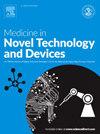Synergistic laser and haptic therapy for pain relief and muscle relaxation of forearm flexors
Q3 Medicine
引用次数: 0
Abstract
—In the realm of pain relief and therapy treatment, traditional single modality treatment approaches do not suffice in offering meaningful and long-lasting therapeutic effects. A modified treatment method with the laser and haptic activations within a single, hand-held device to enhance the synergistic effect during treatment is designed. It has been established that a laser, either red or infrared, is effective for promoting collagen synthesis and healing wounds by utilizing light to alter chemical and structural components at the cellular level. Alternatively, muscles are made to relax and blood flow is enhanced by apt haptic stimulation of blood circulation through proper placement of the inducing electrode. The combination therapy device merges these modalities into a ‘therapy gun’ that proves to be very effective. Though the comprehensive study and effect of the entire musculature is very cumbersome, we have focused on the most commonly used muscle groups, the flexor muscles of the forearm. The results are tested and validated using multiple biosignal study including electromyography (EMG) and endodermal activity (EDA) and the muscle load activities manipulated from the EMG. The intensity and time of treatment shall be changed depending on the patient's requirements. Post-treatment, following therapy, the EMG results showed a marked reduction in muscle activation, with an MVC of 1.350 mV and a decrease in RMS values, reflecting muscle relaxation. The PSD of the EMG signal shifted towards lower frequencies, confirming reduced muscle activity. Similarly, post-treatment EDA results demonstrated a decrease in skin conductance, with values stabilizing around 4.976 S, reflecting a return to baseline levels of physiological arousal. The histogram and PSD of the EDA signal showed a shift towards lower frequencies, consistent with the calming effects of the vibration therapy.
激光与触觉协同治疗缓解前臂屈肌疼痛及肌肉松弛
在疼痛缓解和治疗领域,传统的单一治疗方式不足以提供有意义和持久的治疗效果。设计了一种改进的治疗方法,在单个手持设备内使用激光和触觉激活来增强治疗期间的协同效应。已经确定,激光,无论是红色还是红外线,都能有效地促进胶原蛋白的合成,并通过利用光来改变细胞水平上的化学和结构成分来愈合伤口。另一种方法是,通过适当放置诱导电极,通过适当的触觉刺激血液循环,使肌肉放松,血流增强。联合治疗设备将这些模式合并成一个“治疗枪”,证明是非常有效的。虽然对整个肌肉组织的综合研究和效果是非常繁琐的,但我们集中在最常用的肌肉群,前臂的屈肌。使用多种生物信号研究,包括肌电图(EMG)和内胚层活动(EDA)以及由EMG操纵的肌肉负荷活动,对结果进行了测试和验证。治疗的强度和时间应根据患者的需要而改变。治疗后,肌电图结果显示肌肉激活明显减少,MVC为1.350 mV, RMS值下降,反映肌肉松弛。肌电图信号的PSD向低频偏移,证实肌肉活动减少。同样,治疗后的EDA结果显示皮肤电导下降,其值稳定在4.976 S左右,反映了生理唤醒恢复到基线水平。EDA信号的直方图和PSD显示向低频转移,与振动治疗的镇静效果一致。
本文章由计算机程序翻译,如有差异,请以英文原文为准。
求助全文
约1分钟内获得全文
求助全文
来源期刊

Medicine in Novel Technology and Devices
Medicine-Medicine (miscellaneous)
CiteScore
3.00
自引率
0.00%
发文量
74
审稿时长
64 days
 求助内容:
求助内容: 应助结果提醒方式:
应助结果提醒方式:


